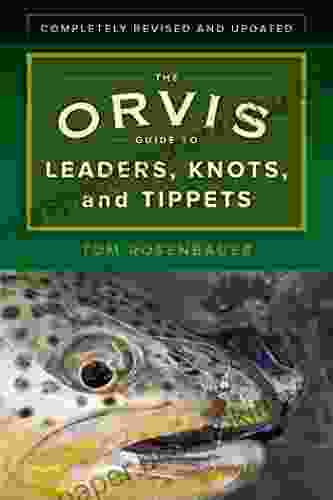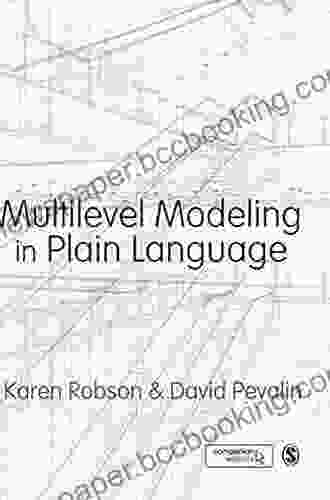Multilevel Modeling in Plain Language: Unraveling the Hidden Layers of Data

Multilevel modeling, also known as mixed-effects modeling or hierarchical modeling, is a powerful statistical technique that allows researchers to analyze data with a nested structure. It is commonly used in fields such as education, psychology, and sociology, where data is often collected at multiple levels, such as students within classrooms or employees within companies.
Multilevel modeling is a complex technique, but it is essential for understanding the relationships between variables at different levels of analysis. This comprehensive guide will break down the complexities of multilevel modeling and present it in a clear and approachable language. By the end of this article, you will have a solid understanding of the concepts and applications of multilevel modeling, empowering you to unlock the power of data analysis and gain unparalleled insights into complex relationships.
Multilevel modeling is a statistical technique that takes into account the hierarchical structure of data. This means that it allows researchers to analyze data that is nested within groups or clusters. For example, a researcher might be interested in studying the relationship between student achievement and socioeconomic status. In this case, the data would be nested within schools, with students being nested within classes. Multilevel modeling would allow the researcher to take into account the effects of both school and class membership on student achievement.
4.6 out of 5
| Language | : | English |
| File size | : | 4213 KB |
| Text-to-Speech | : | Enabled |
| Screen Reader | : | Supported |
| Enhanced typesetting | : | Enabled |
| Print length | : | 158 pages |
Multilevel modeling is a powerful tool for analyzing data with a hierarchical structure. It can be used to investigate a wide range of research questions, including:
- The effects of individual-level variables on group-level outcomes
- The effects of group-level variables on individual-level outcomes
- The relationship between variables at different levels of analysis
Multilevel modeling offers a number of benefits over traditional statistical techniques. These benefits include:
- Increased accuracy: Multilevel modeling takes into account the hierarchical structure of data, which can lead to more accurate results.
- Improved precision: Multilevel modeling can improve the precision of estimates by taking into account the correlation between observations within groups.
- Increased power: Multilevel modeling can increase the power of a study by allowing researchers to analyze data at multiple levels of analysis.
- Greater flexibility: Multilevel modeling is a flexible technique that can be used to analyze a wide range of research questions.
Multilevel modeling is a complex technique, and there are a number of challenges associated with its use. These challenges include:
- Data collection: Multilevel modeling requires data that is collected at multiple levels of analysis. This can be difficult and expensive to collect.
- Model selection: there are a number of different multilevel models that can be used to analyze data. Choosing the right model is important, but it can be difficult to do.
- Interpretation: Multilevel models can be difficult to interpret. This is because they take into account the hierarchical structure of data, which can make it difficult to understand the effects of variables at different levels of analysis.
Multilevel modeling is a powerful statistical technique that can be used to analyze data with a hierarchical structure. It offers a number of benefits over traditional statistical techniques, but it also comes with a number of challenges. If you are considering using multilevel modeling, it is important to be aware of both the benefits and the challenges associated with its use. With careful planning and execution, multilevel modeling can be a valuable tool for understanding the complex relationships between variables at different levels of analysis.
- [Multilevel Modeling: A Practical Guide](https://www.Our Book Library.com/Multilevel-Modeling-Practical-Gelman-Hill/dp/0133381861)
- [The Multilevel Modeling Handbook](https://www.Our Book Library.com/Multilevel-Modeling-Handbook-Applied-Statistics/dp/1848723206)
- [Multilevel Modeling in R](https://www.Our Book Library.com/Multilevel-Modeling-R-Alfonso-Pinheiro/dp/1107422612)
4.6 out of 5
| Language | : | English |
| File size | : | 4213 KB |
| Text-to-Speech | : | Enabled |
| Screen Reader | : | Supported |
| Enhanced typesetting | : | Enabled |
| Print length | : | 158 pages |
Do you want to contribute by writing guest posts on this blog?
Please contact us and send us a resume of previous articles that you have written.
 Book
Book Novel
Novel Page
Page Chapter
Chapter Text
Text Story
Story Genre
Genre Reader
Reader Library
Library Paperback
Paperback E-book
E-book Magazine
Magazine Newspaper
Newspaper Paragraph
Paragraph Sentence
Sentence Bookmark
Bookmark Shelf
Shelf Glossary
Glossary Bibliography
Bibliography Foreword
Foreword Preface
Preface Synopsis
Synopsis Annotation
Annotation Footnote
Footnote Manuscript
Manuscript Scroll
Scroll Codex
Codex Tome
Tome Bestseller
Bestseller Classics
Classics Library card
Library card Narrative
Narrative Biography
Biography Autobiography
Autobiography Memoir
Memoir Reference
Reference Encyclopedia
Encyclopedia Raichelle Carter
Raichelle Carter Jules Gailhabaud
Jules Gailhabaud Maureen Connolly
Maureen Connolly Nathan Doneen
Nathan Doneen Julie Sykes
Julie Sykes Robert W Lee
Robert W Lee Juliet Marillier
Juliet Marillier Justin Eisinger
Justin Eisinger Kate Darling
Kate Darling Robert J Ryan
Robert J Ryan K Vann O Brien
K Vann O Brien Judith Z Kallenbach
Judith Z Kallenbach Julian Jackson
Julian Jackson William C Ringenberg
William C Ringenberg Valerio De Sanctis
Valerio De Sanctis Karen Autio
Karen Autio Katey Morgan
Katey Morgan Julie Berry
Julie Berry Kale James
Kale James Kass Morgan
Kass Morgan
Light bulbAdvertise smarter! Our strategic ad space ensures maximum exposure. Reserve your spot today!

 Charles BukowskiWarrior Relentless Karen Lynch: Uncover the Secrets of an Unstoppable Spirit
Charles BukowskiWarrior Relentless Karen Lynch: Uncover the Secrets of an Unstoppable Spirit Andy HayesFollow ·19.9k
Andy HayesFollow ·19.9k Isaac MitchellFollow ·5.9k
Isaac MitchellFollow ·5.9k Albert ReedFollow ·3.1k
Albert ReedFollow ·3.1k Marc FosterFollow ·9.6k
Marc FosterFollow ·9.6k Vernon BlairFollow ·7.6k
Vernon BlairFollow ·7.6k Calvin FisherFollow ·3.1k
Calvin FisherFollow ·3.1k Caleb CarterFollow ·12.6k
Caleb CarterFollow ·12.6k Fyodor DostoevskyFollow ·18.3k
Fyodor DostoevskyFollow ·18.3k

 Drew Bell
Drew BellLife and Death in West Africa: A Groundbreaking Account...
A Journey Through...

 Stanley Bell
Stanley BellMaster the Art of Fly Fishing Line Management: A...
Are you an avid fly...

 Ernest Powell
Ernest PowellUnleash Your Entrepreneurial Spirit: A Comprehensive...
In the competitive...

 Derrick Hughes
Derrick HughesMaster Your Ride: The Ultimate Guide to Road Bike...
Are you ready to elevate your cycling...

 Camden Mitchell
Camden MitchellUnveiling the Enchanting World of American Royals III:...
Embark on a Captivating Royal Saga: American...

 Richard Simmons
Richard SimmonsUnveiling the Secrets of Fly Tying: A Comprehensive...
In the realm of...
4.6 out of 5
| Language | : | English |
| File size | : | 4213 KB |
| Text-to-Speech | : | Enabled |
| Screen Reader | : | Supported |
| Enhanced typesetting | : | Enabled |
| Print length | : | 158 pages |










